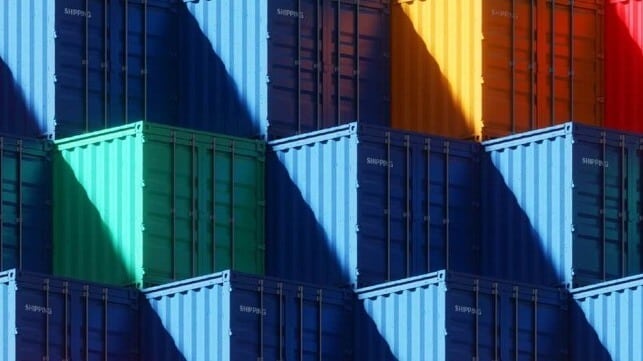The Evolving Landscape of North American Ports

The marine container cargo industry is undergoing significant changes. Recent months have brought various challenges and opportunities that are reshaping the landscape of North American ports. From geopolitical tensions to environmental concerns, the factors influencing this sector are numerous and complex. As Yogi Berra, the legendary New York Yankees catcher, once said, “You can learn a lot by watching.” Observers of the cargo world have certainly seen a lot lately.
This article explores the current state of North American ports, focusing on the shift in manufacturing, the impact of automation, and the growth of Florida ports.
De-Risking Global Manufacturing
One of the most significant trends in global manufacturing is the move to “de-risk” from China. The Asia Pacific Foundation of Canada has noted a “tectonic shift” in manufacturing as companies seek alternatives to Chinese production. This shift is largely driven by escalating tensions between the U.S. and China, prompting manufacturers to relocate operations to countries like Mexico, Thailand, Vietnam, and India.
The Port of Los Angeles serves as a prime example of this transition. At the end of 2022, China accounted for 57 percent of the port’s overall trade volume. However, that figure has dropped to approximately 43 percent today. Despite this decline in trade volume from China, the Port of Los Angeles has experienced record-breaking cargo handling. In July 2024, the port managed 939,600 Twenty-foot Equivalent Units (TEUs), marking a 37 percent increase from the previous year. This surge indicates that while trade with China is decreasing, overall cargo volumes are not suffering.
Gene Seroka, the Executive Director of the Port of Los Angeles, attributes this growth to an influx of holiday goods arriving earlier than usual. This strategy aims to mitigate potential delays later in the year. Meanwhile, John Painter, CEO of Guangzhou Port America, Inc., highlights that many shippers are increasingly sourcing from Southeast Asia and India to avoid risks associated with China. However, he notes that the volume of goods exiting Chinese ports remains robust, suggesting that the situation may be more complex than it appears.
Growth and Development in Florida Ports
Florida’s ports are experiencing a boom, driven by a growing population and a robust economy. Port Tampa Bay, located on Florida’s Gulf Coast, has reported a remarkable 27 percent increase in container traffic for the fiscal year ending June 30. This growth is fueled by the state’s status as the 15th largest economy in the world, combined with a thriving tourism sector that creates a high demand for cargo.
The Tampa Bay area is home to a significant concentration of distribution centers, with over 550 million square feet of space available. This infrastructure supports the recent expansion of container services connecting Florida with Asia and Latin America. Wade Elliott, Senior Vice President of Marketing & Business Development at Port Tampa Bay, emphasizes the importance of these new services in meeting the needs of Florida’s rapidly growing market.
In addition to Port Tampa Bay, Port Everglades is also undergoing significant upgrades. The port has launched a five-year project to enhance its container handling capabilities, including the modernization of its crane systems. This upgrade is essential as container ships continue to grow in size and capacity. Despite a slight decrease in cargo volumes this year, Port Everglades is optimistic about future growth, particularly in trade with countries like Korea, Singapore, and India.
PortMiami is also making strides with a $4.2 billion capital improvement program aimed at achieving net-zero carbon emissions. This initiative aligns with Miami-Dade County’s goal to reduce emissions by 50 percent by 2030. The focus on sustainability reflects a broader trend in the industry toward environmentally friendly practices.
ABS Tackles Real-Time Issues in Container Shipping Landscape with Maritime Experts
Resilience and Recovery in Baltimore
The Port of Baltimore is on the path to recovery following the Key Bridge incident earlier this year. Richard Scher, Director of Communications for the Maryland Port Administration, reports that truck transactions at the Seagirt container terminal have increased significantly since September. The port is nearing its pre-incident average of 3,500 daily truck transactions.
Despite ongoing challenges, July cargo numbers showed a 39 percent increase in imported cars and nearly a 12 percent rise in overall car imports compared to the previous year. While container volumes are still below last year’s figures, the port is gradually returning to normal operations.
Ports America Chesapeake, which operates the Seagirt terminal, is investing in new equipment and infrastructure to enhance efficiency and sustainability. The addition of Neo-Panamax ship-to-shore cranes and rubber-tired gantry cranes will help the port handle larger vessels and heavier loads. Furthermore, an electrification project aims to reduce the terminal’s carbon footprint, demonstrating a commitment to environmental responsibility.
The North American port landscape is evolving rapidly. The shift in global manufacturing, the growth of Florida ports, and the recovery efforts in Baltimore highlight the resilience and adaptability of the industry. As these changes unfold, stakeholders must remain vigilant and responsive to the challenges and opportunities that lie ahead.
